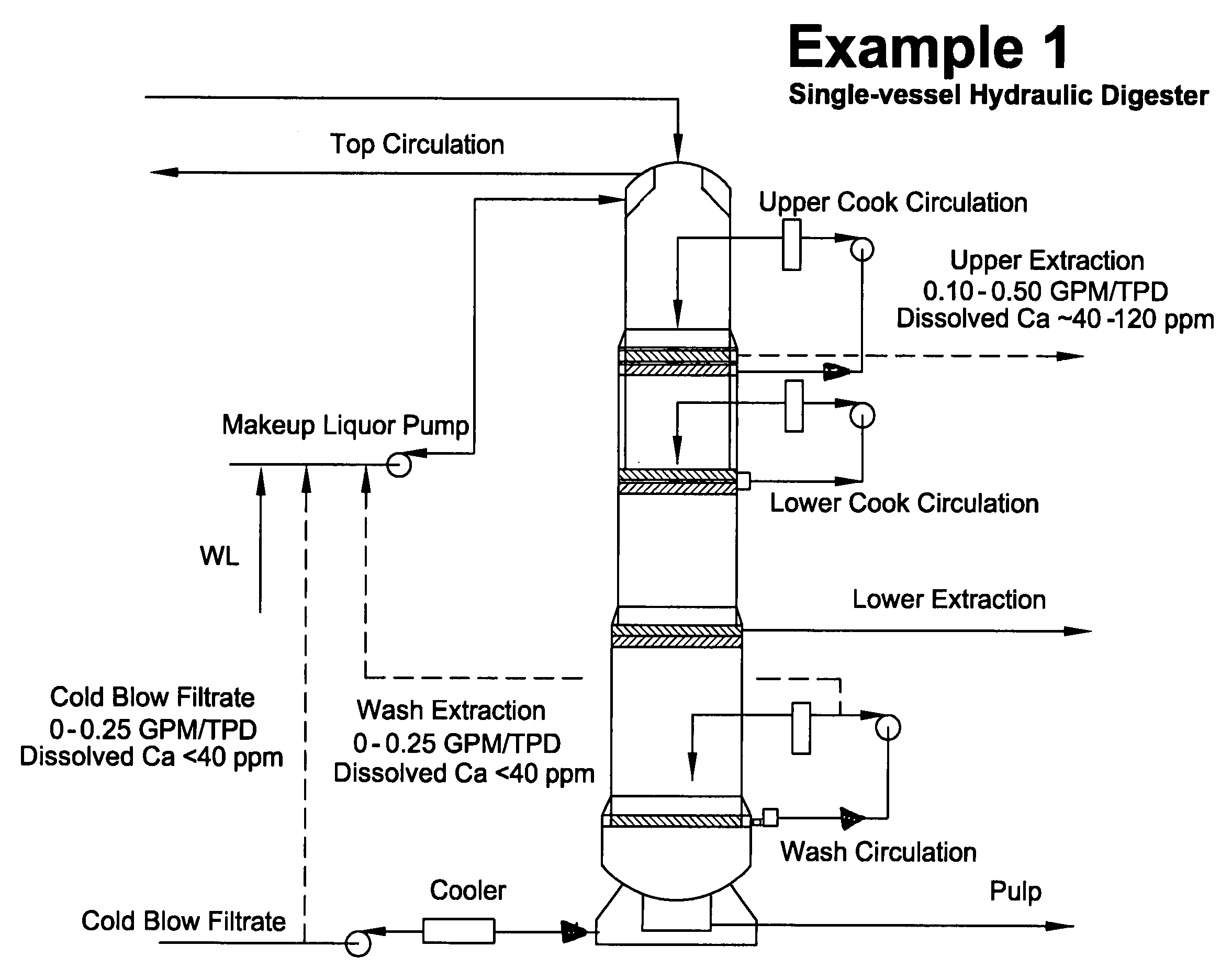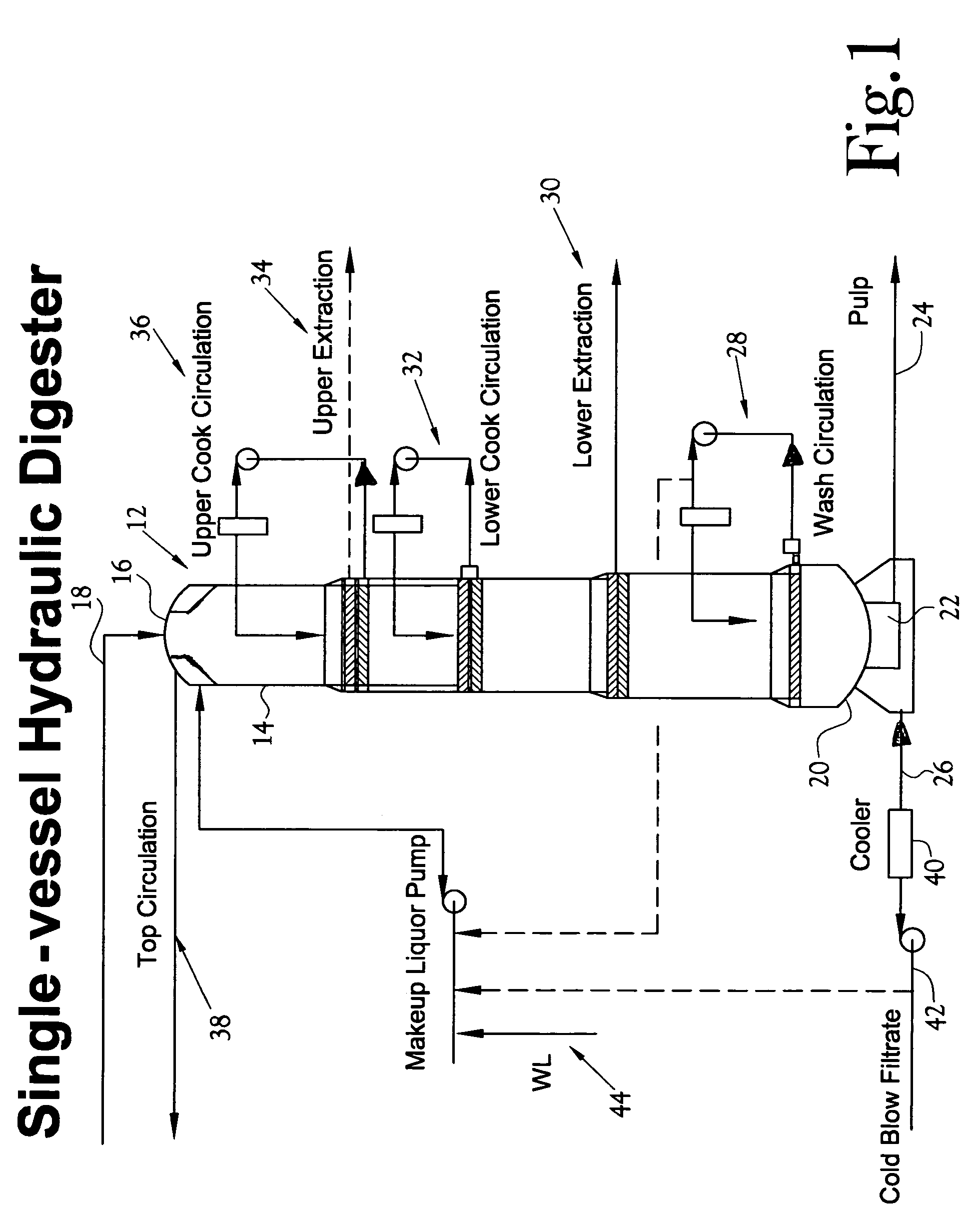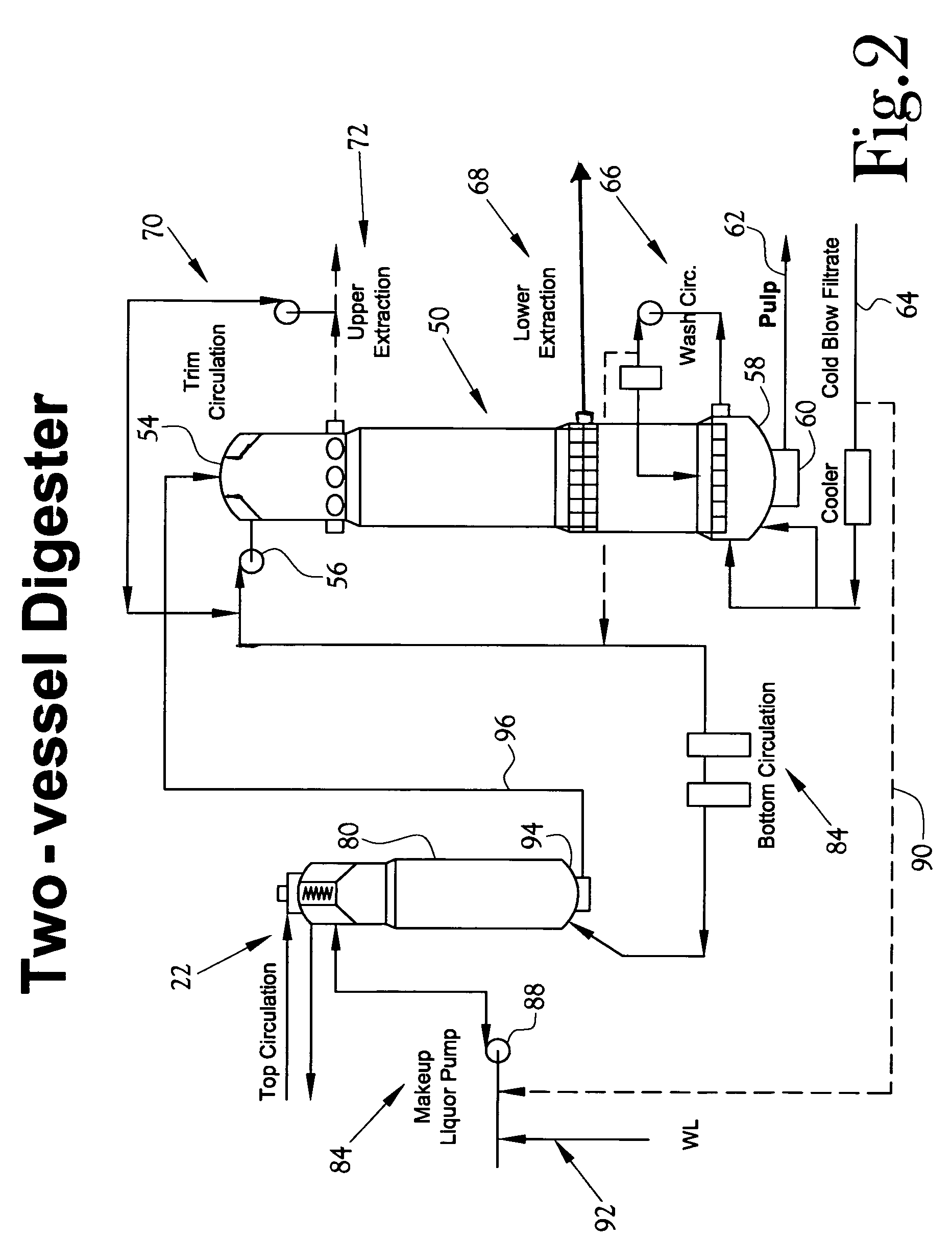Methods to decrease scaling in digester systems
a digester and system technology, applied in the direction of continuous pulping process, pulping with inorganic bases, pulp liquor regeneration, etc., can solve the problems of no known cost-effective process modification to prevent scaling from forming, loss of productivity and operating costs, and loss of production of up to several days, so as to reduce calcium carbonate scaling and pulping energy requirements , the effect of saving costs
- Summary
- Abstract
- Description
- Claims
- Application Information
AI Technical Summary
Benefits of technology
Problems solved by technology
Method used
Image
Examples
example i
[0022]The preferred embodiment of the method of the present invention was employed with the digester depicted in FIG. 1. In this single-vessel continuous digester, cooking liquor rich in dissolved calcium of ˜40–120 ppm is withdrawn from the first row of screens of the upper cook circulation screen set at a flow rate of 0.10–0.50 (GPM for each ton per day production rate, or GPM / TPD) factor. (For example, for a pulp production rate of 750 tons per day, 0.1–0.5 times 750, yields 75–350 gallons per minute (GPM). A mixture of cold blow filtrate and wash extraction streams, the sum of which is about the same as the upper extraction flow and the concentration of dissolved calcium is less than 40 ppm, is added to the top of the digester via the makeup liquor pump. In this example, up to about 45% of the total dissolved calcium may be removed from the digester system, significantly reducing the tendency of calcium scaling on digester screens and cooking heaters.
example ii
[0023]In a further example of the preferred embodiment of the method of the present invention, employing a single vessel digester as depicted in FIG. 1, cooking liquor with ˜100 ppm dissolved calcium is withdrawn from the first row of screens of the upper cook circulation screen set at a flow rate of 0.35 (gallons per minute for each ton per day production rate, or GPM / TPD) factor, For example, for a pulp production rate of 750 tons per day, the extraction flow rate is 0.35 times 750, or ˜262 gallons per minute (GPM). A mixture of cold blow filtrate and wash extraction flows, the sum of which is about the same as the upper extraction flow and concentration of dissolved calcium is less that 40 ppm is added to the top of the digester via the makeup liquor pump. In this example, up to about 35% of the total dissolved calcium may be removed from the digester system, significantly reducing the tendency of calcium scaling on digester screens and cooking heaters.
example iii
[0024]In a still further example employing the preferred embodiment of the method of the present invention, in a single vessel digester as depicted in FIG. 1, cooking liquor rich in dissolved calcium of ˜100 ppm is withdrawn from the first row of screens of the upper cook circulation screen set at a flow rate of 0.35 gallons per minute for each ton per day production rate (GPM / TPD) factor. For example, for a pulp production rate of 750 tons per day, the flow rate is 0.35 times 750, or ˜262 gallons per minute (GPM). A cooking liquor taken from the wash circulation, at about the same flow rate with concentration of dissolved calcium less than 40 PPM, is added to the suction side of the upper cook circulation pump to replace the extracted calcium-rich cooking liquor, thus keeping the hydraulic balance of the digester. The upper circulation in this example is connected to the second (bottom) row of the upper cook screens. In this example, more than about 35% of the total dissolved calci...
PUM
| Property | Measurement | Unit |
|---|---|---|
| concentration | aaaaa | aaaaa |
| temperature | aaaaa | aaaaa |
| mass | aaaaa | aaaaa |
Abstract
Description
Claims
Application Information
 Login to View More
Login to View More - R&D
- Intellectual Property
- Life Sciences
- Materials
- Tech Scout
- Unparalleled Data Quality
- Higher Quality Content
- 60% Fewer Hallucinations
Browse by: Latest US Patents, China's latest patents, Technical Efficacy Thesaurus, Application Domain, Technology Topic, Popular Technical Reports.
© 2025 PatSnap. All rights reserved.Legal|Privacy policy|Modern Slavery Act Transparency Statement|Sitemap|About US| Contact US: help@patsnap.com



